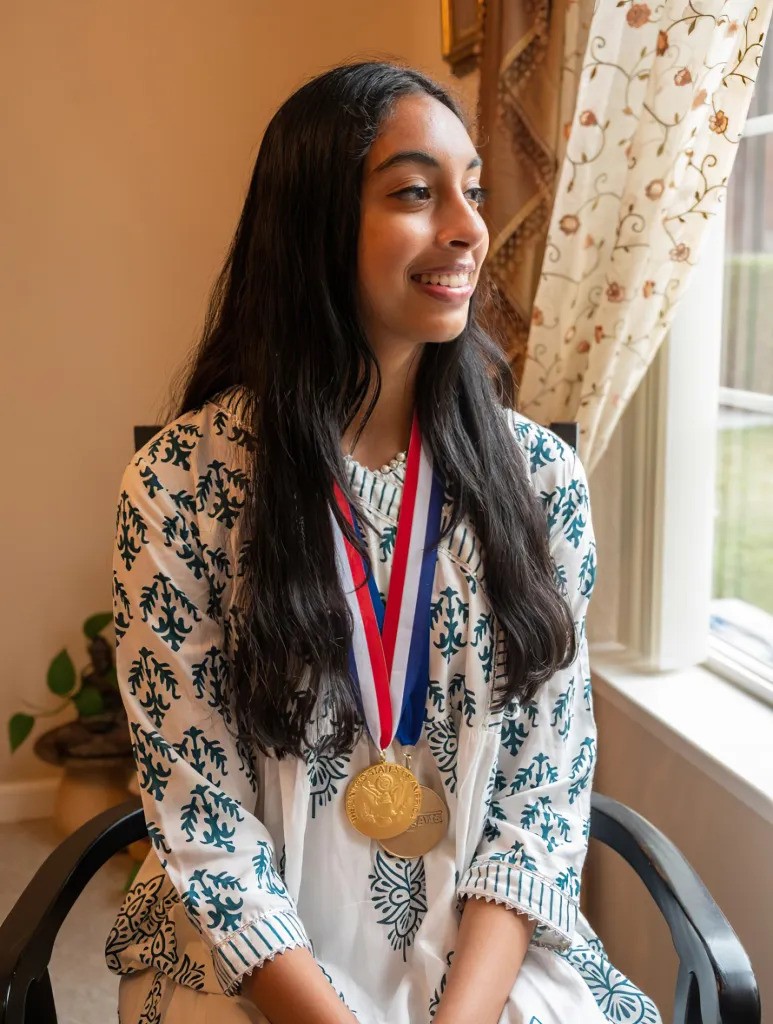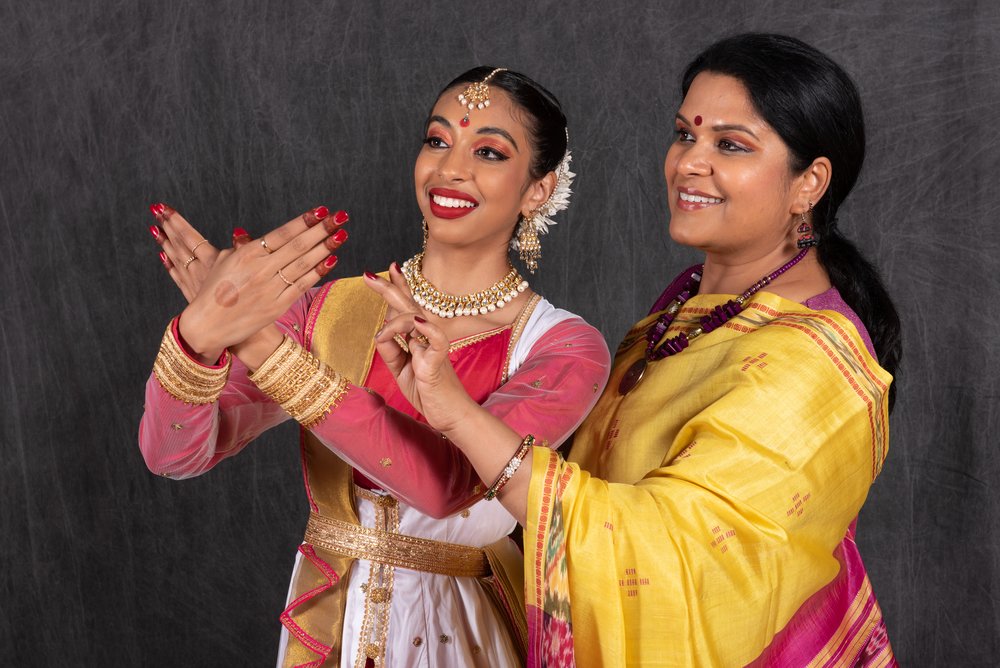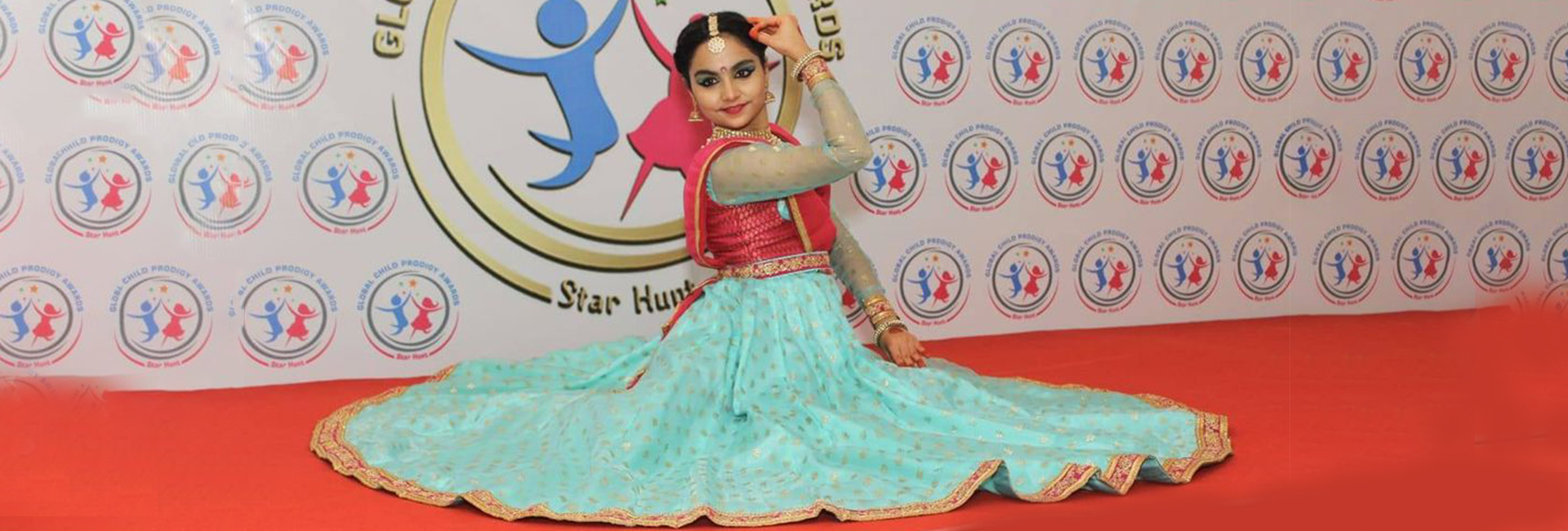(February 4, 2024) It was 6 am when Reva Srivastava of Fermont received a confirmation mail on being named a 2022 US Presidential Scholar in the Arts. Unable to contain her excitement, the Kathak dancer jumped so hard in joy that for a minute her mom Anupama Srivastava thought that there was an earthquake. When the Srivastavas applied, they weren’t aware of the magnitude of the honour. Each year only 20 scholars are selected from a pool of 60 candidates nominated by the YoungArts program.

Reva Srivastava
An active participant in National YoungArts Week+, she engaged remotely with a young Odissi dancer and received mentorship from Bharatanatyam dancer Nadhi Thekkek. However, Reva didn’t feel getting the experience was any less because of it being online. Reflecting on this experience, Reva said in an interview, “She had a really interesting way of approaching your dance, which I hadn’t thought of. She really pushed us to show more than just the story that was being told, like how we were feeling because of the story, and to go a deeper layer.” It was her exceptional work ethic and commitment during National YoungArts Week+ that led to her nomination for the U.S. Presidential Scholar in the Arts award.
Love for dance
It all began with Reva’s mother Anupama who began learning Kathak at the age of 6 under Padma Shri Shovana Narayan in Delhi. But her relocation to the US post-marriage and the demands of work and family life put a stop to her consistent practice. But her daughter Reva’s fascination with dance prompted Anupama to establish InSyncKathak Dance School when Reva was only 6 years old. Recalling the inspiration, Reva shared, “There was something about the dance and seeing how happy it made my mom that kind of captured me at a really young age.” Speaking about her daughter Reva, Anupama said, “She made me a teacher. I was just a dancer.”


Reva with mom Anupama Srivastava
Learning from Shovana Narayan
Moreover, Reva has also received training from her mom’s guru Padma Shri awardee Shovana Narayan whenever she would visit the US, training primarily in the Lucknow Gharana style of Kathak. “I was so focused on what she was saying. She’s able to draw you in. And she was saying really complicated things. But the way that she explained everything was really helpful to me,” Reva added. However, learning from Shovana Narayan wasn’t too dissimilar to learning from her mom. Their teaching styles are almost similar, however, she could always see “a very clear separation” between her mom and guru.
Reva choreographed a solo piece to Taylor Swift’s Epiphany, depicting the experiences of healthcare workers during the COVID-19 pandemic. Through dance, she portrayed the dedication of healthcare workers who assist others, witness loss, and resiliently continue to aid those in need.
Bringing positive change
While Reva’s future plans include attending medical school, she asserts that dance will always be an integral part of her life. “When I’m dancing, I’m not thinking about anything else,” she affirmed. Her creative abilities and artistic platform, she hopes, will contribute to positive change in the world. “I want to make art that inspires me and art that helps me stand up for what I believe and bring a positive evolution,” she added. Reva encourages young dancers to focus on building a strong foundation and technique, urging them to learn as much as possible from their gurus.
Reva, who calls yaman her favourite raga, says that she feels the energy of all of the positions, full orchestra, and the singer. ” I just feel it’s so much fun to dance to those pieces because you take that energy into yourself.”
Reflecting on her passion, Reva advises aspiring dancers to focus on their training and personal growth rather than comparing themselves to others.




